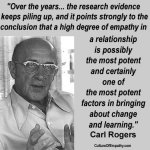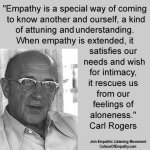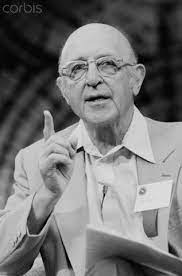1974 lecture that is a companion to his paper "Empathic: An unappreciated way of being" (1975).
01-Carl Rogers on Empathy - YouTube
02-Carl Rogers on Empathy - YouTube
03-Carl Rogers on Empathy - YouTube
04-Carl Rogers on Empathy - YouTube
01-Carl Rogers on Empathy - YouTube
02-Carl Rogers on Empathy - YouTube
03-Carl Rogers on Empathy - YouTube
04-Carl Rogers on Empathy - YouTube





